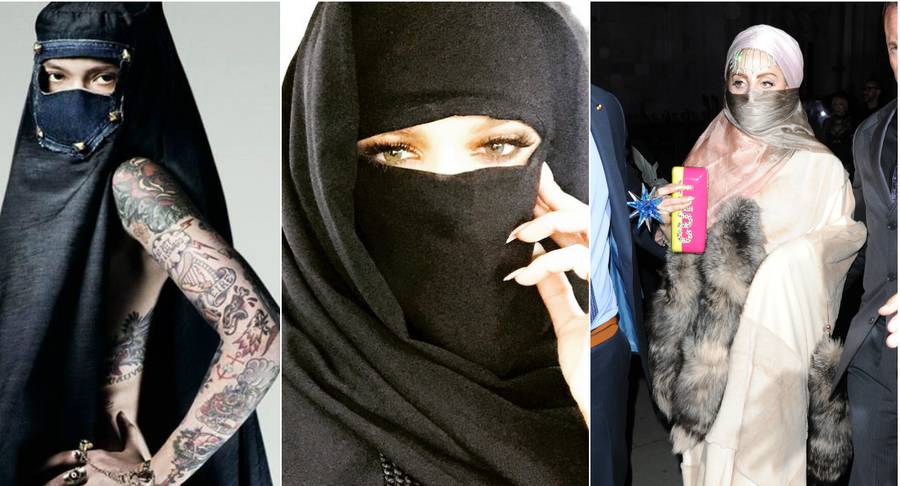Originally published on Mic and republished here with their permission.
Summer is here, and it’s already brought music festivals like Coachella, Governors Ball, and Bonnaroo.
And with those festivals comes the inevitable onslaught of cringe-inducing outfits with the faint taste of cultural appropriation, a la the notorious “hipster headdresses” of Coachella.
Native American headdresses are one of several “fashions” that have been picked up by non-native wearers who were either inspired or simply unaware of the item’s heritage.
Not everything inspired by another culture is cultural appropriation, of course. Susan Scafidi, the director of the Fashion Law Institute at Fordham University, described it as “taking intellectual property, traditional knowledge, cultural expressions, or artifacts from someone else’s culture without permission.”
The problem is the sampling of cultures is often a one-way street, with dominant groups taking from marginalized groups, tinged with leftover power dynamics from colonialism.
It’s possible to be inspired without stealing, but there are important questions worth asking before doing so, Scafidi wrote in Time in 2014:
What’s the significance of the necklace you’re about to put on: Is it just jewelry or a set of prayer beads? Did the source community invite you to wear that traditional robe, perhaps via voluntary sale, and does the community still suffer from a history of exploitation, discrimination or oppression? And how similar is that designer adaptation to the original: a head-to-toe copy, or just a nod in the direction of silhouette or pattern?
Alas, so many people — music festgoers, celebrities, designers — don’t follow those pointers.
So if they’re reading this, here are five outfits we need to retire for good.
1. Native American Headdresses

By this point in time, it should be pretty obvious that wearing a headdress that’s even just inspired by Native American cultures is a no-no.
As Jessica R. Metcalfe, creator of Native American blog and boutique Beyond Buckskin, previously told Mic:
“[The headdress] is a sacred, important symbol to us. And it’s still a tradition that is practiced in our communities… Whenever you have celebrities or major companies misusing the sacred headdress, that is a direct way of destroying our culture.”
But plenty of attendees at music festivals seem to miss the memo.
There are Tumblrs dedicated to “hipster headdresses” and last year, Khloe Kardashian was criticized for wearing one at a birthday party.
2. The Bindi as Costume Makeup

The bindi is another culturally appropriated “trend” that’s cropped up in music festivals, thanks to the likes of celebrities like Vanessa Hudgens, who sported a glammed-up version during Coachella this year.
Hindu and Southeast Asian girls took to Twitter and Instagram in protest, using the hashtag #ReclaimtheBindi.
Selena Gomez similarly came under fire in 2013 for her portrayal of Bollywood in her music and attire at the MTV Movie Awards, as Hindu leaders demanded an apology and pointed to the religious connotations of the bindi.
The bindi might not carry quite as much deep meaning for all people of Indian heritage, but if used to “play Indian,” essentially, then the wearer might want to think twice.
3. Chopsticks in Your Hair

This year’s Met Gala theme China: Through the Looking Glass was just begging for cultural appropriation, which led many starlets to play it safe with minimal references to China. Emma Roberts, however, earned herself Twitter backlash for wearing chopsticks in her hair.
Chopsticks in the hair is one of many broadly “Asian” styles tried on by Western dressers (for what it’s worth, chopsticks aren’t even a Chinese hairstyle — hair sticks have been used in many countries, and Chinese chopsticks are only for eating).
Hair sticks, parasols, and kimonos standing in for anything “Asian” leads to a mishmash of cultures and ridiculous outfits like these. The rise of “kimono cardigans,” for example, has companies using the term for whatever conveniently fits the bill.
The best solution is to know an item’s origins, and stick with what’s authentic for you.
Just ask Katy Perry — only dive into a full-on “geisha” outfit if you’re a geisha.
4. The Hypersexualed Niqab and Burqa

Kardashian came under fire from the Twittersphere in May when she posted a selfie wearing a niqab, a traditional veil that covers the face, leaving only the eyes exposed.
She should have known better: In 2013, Lady Gaga was also criticized after she released the track “Burqa” that eroticized the traditional garment worn by Muslim women — oh, and wore some herself.
In an op-ed for the Washington Post addressed to Gaga, Umema Aimen wrote, “You lost me when you proceeded to turn such a sacred symbol of my religion into an exotic costume. It is not something you can wear to your Halloween party.”
The hijab and accompanying niqab are signs of modesty and faith in Islam, according to the BBC (and viewed as symbols of oppression by others).
To turn them into sexy accessories willfully overlooks this nuance and disregards the women who really wear them every day.
5. Saris

The best example of how to actually wear an item from another culture? Look to saris and other Indian wear.
“The sari was originally intended to keep teenaged girls and women both comfortable in the heat and to look ‘modest,'” noted Palash Ghosh in the International Business Times.
That doesn’t mean non-Indian women can’t ever wear them; when in 2013, British first lady Samantha Cameron wore a sari to a Hindu temple to celebrate Diwali, a temple-goer told the Guardian:
“The fact that Mrs. Cameron made such a huge effort to dress as per Hindu customs most definitely shows how much she values our culture, religion and traditions.”
Oprah accomplished a similar effect when she donned a salwar kameez for the Jaipur Literature Festival in 2012, in Jaipur.
On the other hand, when a non-Indian tosses one on without much understanding of its origins, Gosh wrote, it feels like watching trick-or-treaters on Halloween.
And if someone’s really interested in exploring different types of dress worn by women in South Asia, best to keep in mind that they’re not all saris (as this Quartz guide makes clear).
***
There’s nothing wrong with being inspired by other cultures. But there is harm in not respecting the culture that inspired you in the first place.
[do_widget id=’text-101′]
Search our 3000+ articles!
Read our articles about:
Our online racial justice training
Used by hundreds of universities, non-profits, and businesses.
Click to learn more




















